YOUNG, GIFTED, and BLACK: Reimagining A Black Visual Vernacular
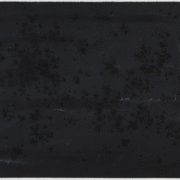
Hard-earned reclamation of the colour black dramatically underlines one of the most striking visual shifts presented in Young, Gifted, and Black: a riotous and radical explosion of colour – Matt Wycoff
Words by: Olisa Jr.
It is the odyssey of introspection, a beautifully abstract portrait offering a gentle glimpse of sibylline juxtapositions and attempts at an unbridled exploration of racial identity. Gazing into Bethany Collins’ Too White To Be Black (2014), set upon a wooden panel covered in blackboard paint, your eyes seek to uncover the chalk-like white lettering buried beneath a layer of scattered black clusters and seemingly imperfect erasures.
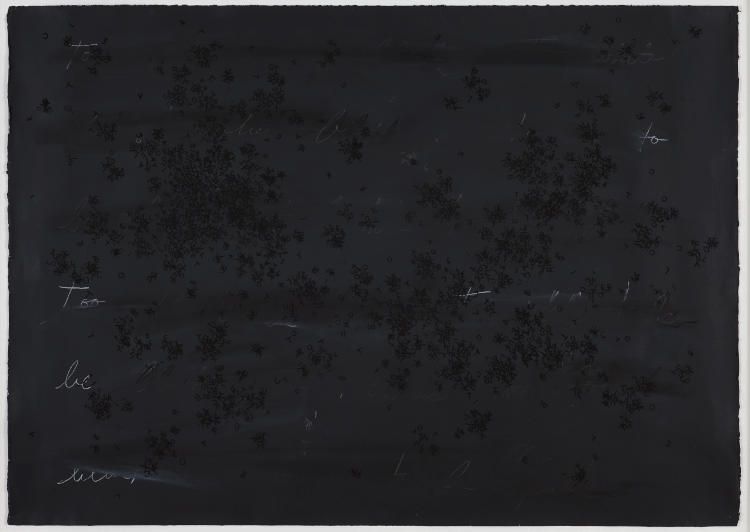
Of this rendering, Collins conveys her experience of being born of mixed race, constantly battling both personal and societal perceptions of her identity. This painting presents itself as one of many contemporary reimaginations of what we understand as portraiture. It intricately displays a new form of surveying blackness—the primal focuses of the Young, Gifted, and Black exhibition, curated by Antwaun Sargent and Matt Wycoff.
“For many, there is a near-constant back-and-forth between a firm belief that art can and does make a change, and a question of to what extent it should overtly try.” – Matt Wycoff.
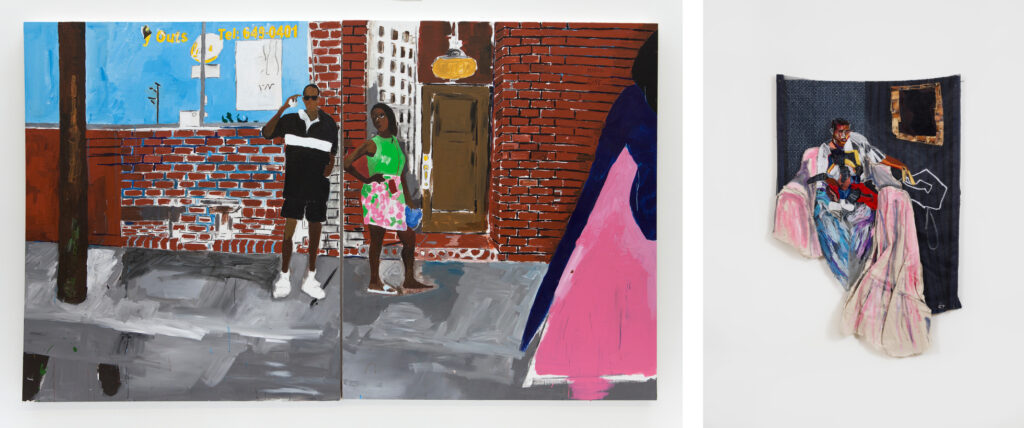
On underpinnings, the exhibition’s 51 works address a plethora of perspectives and identities on blackness across various mediums, challenging our understanding of visual frameworks while engaging the nuanced realities of both perception and interpretation. Laden with subtle visual references that reveal the featured artists’ desires for the ability to dictate their approaches to presenting a newfound black visual vernacular, these works depict a vivid space grounded in strongly opposing the need to view Black art through the lens of identity politics.
At the same time, the exhibition nurtures a narrative on the reshaping of notions on the colour black and representations of self. This idea of a radically unfiltered space, carefully reworking the system of thought within the art world, is essential to grasping both the historical and cultural importance of this exhibition.
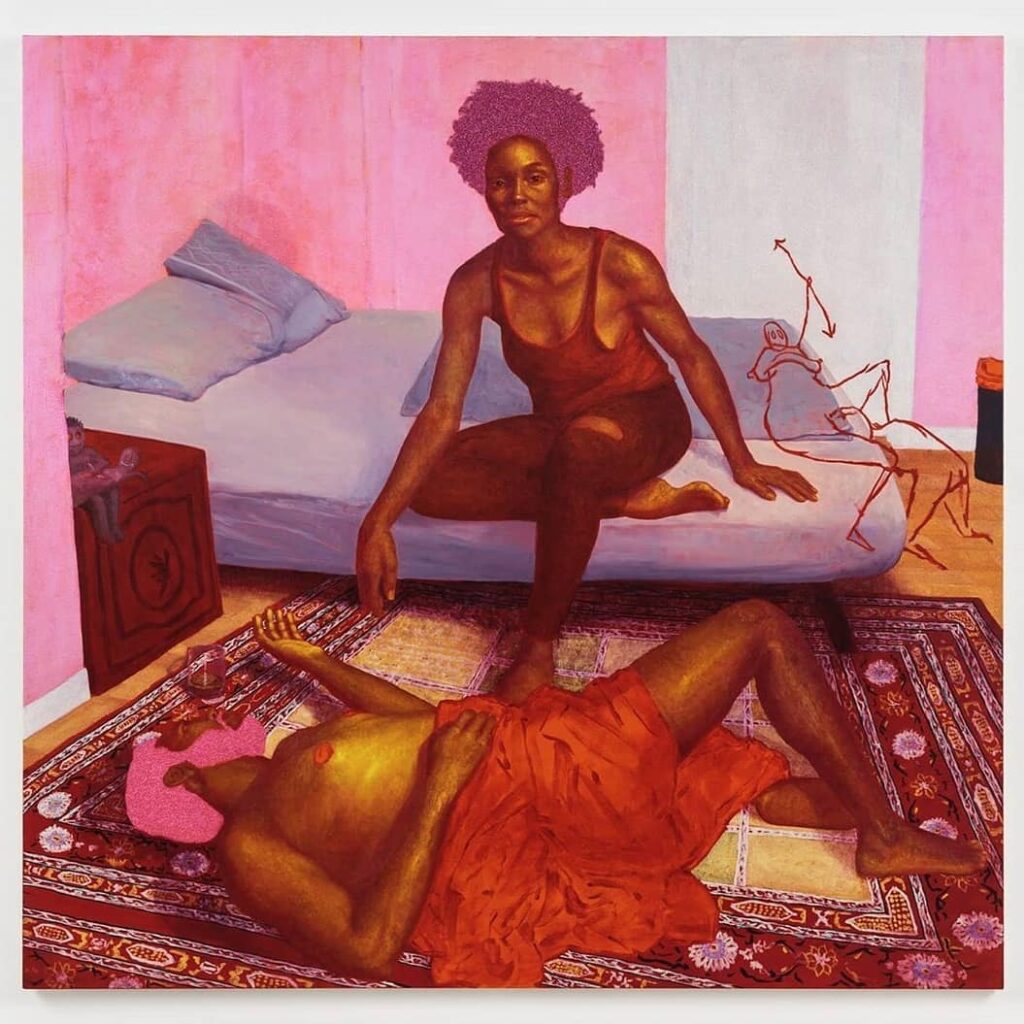
“Hard-earned reclamation of the colour black dramatically underlines one of the most striking visual shifts presented in Young, Gifted, and Black: a riotous and radical explosion of colour, primarily among the younger painters, to represent the human form,” curator Matt Wycoff says of the remarkably coloured works conjuring a surrealist and euphoric essence to assess issues of race and identity, such as Arcmanoro Niles’ The Nights I Don’t Remember, The Nights I Can’t Forget (2018) juxtaposing vibrant pink tones with subdued subject postures to convey a tender, erotic image of coping with generational trauma—a sorrowful effect of countless years of racism.
‘The way the colour black came to represent the many-hued African diaspora begins with slave owners and traffickers distancing themselves from the property and product of their trade. The owners and traffickers being white; black, served as an expedient antonym for the symbolic distortion of enslaved individuals into something less than human. It’s a history no adjective seems to illuminate meaningfully. Maddening, infuriating, atrocious, and staggering all fail to describe the four hundred years of terror and denigration that indelibly linked people of African origin to the colour black and its attendant symbolisms that have included, but are by no means limited to, stupidity, laziness, the devil, and an absence of visible light.’
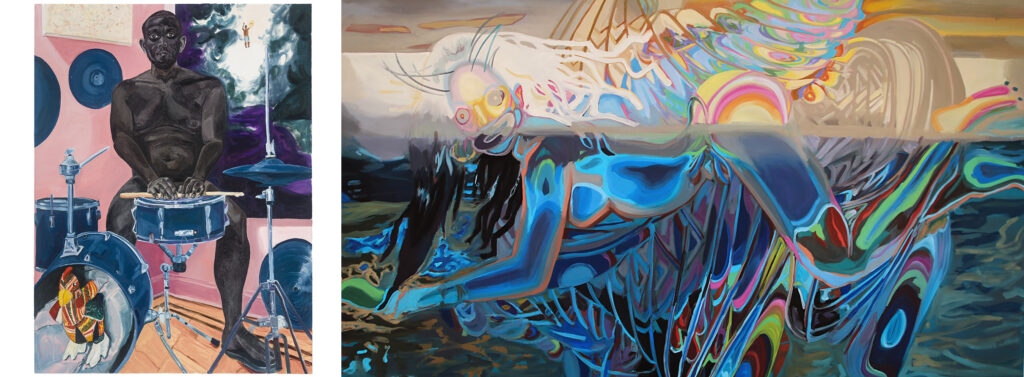
Perhaps, in this ever-transforming era of contemporary art and visual expression, the exhibition serves as a living testament to the possibility of conceptual and social change that allows for the liberation of identity, ownership, and communication of Black art and history. Furthermore, the onus is on both the artists featured in the Young, Gifted, and Black exhibition, and everyone else, to overtly amplify the urgency of viewing, portraying, and appreciating the artistic works of Black artists through an egalitarian lens, as the fight to shift the status quo is important now more than ever.
Check out the GUAP Arts & Culture section, to discover new art, film, and creative individuals.

